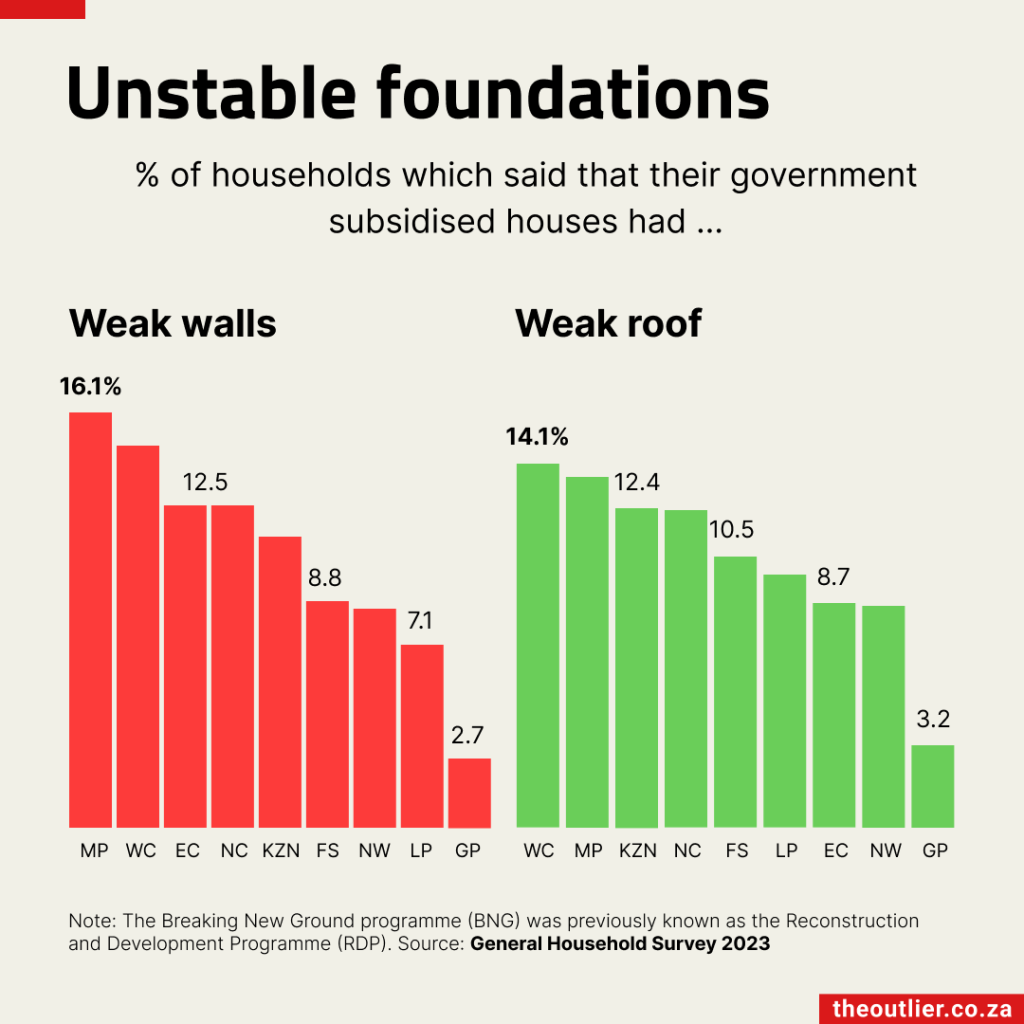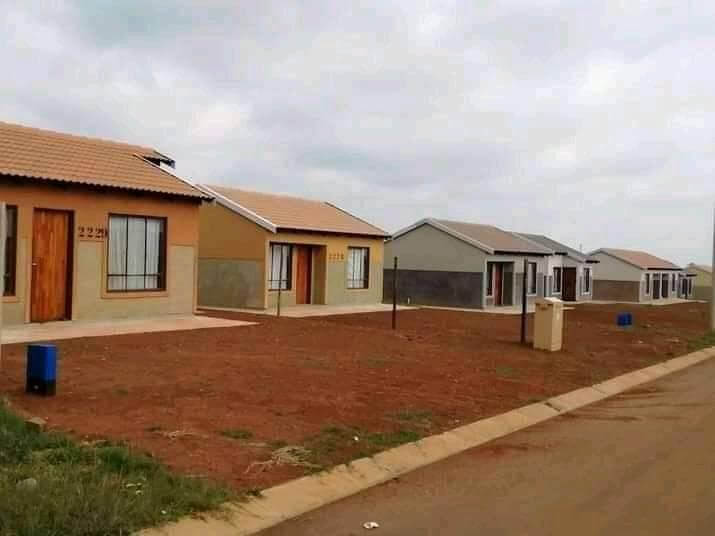Just 42,773 government-subsidised houses were built in South Africa in the 2023/24 financial year. That’s an 82% decline compared with the 235,635 houses built 26 years ago in 1998/99.
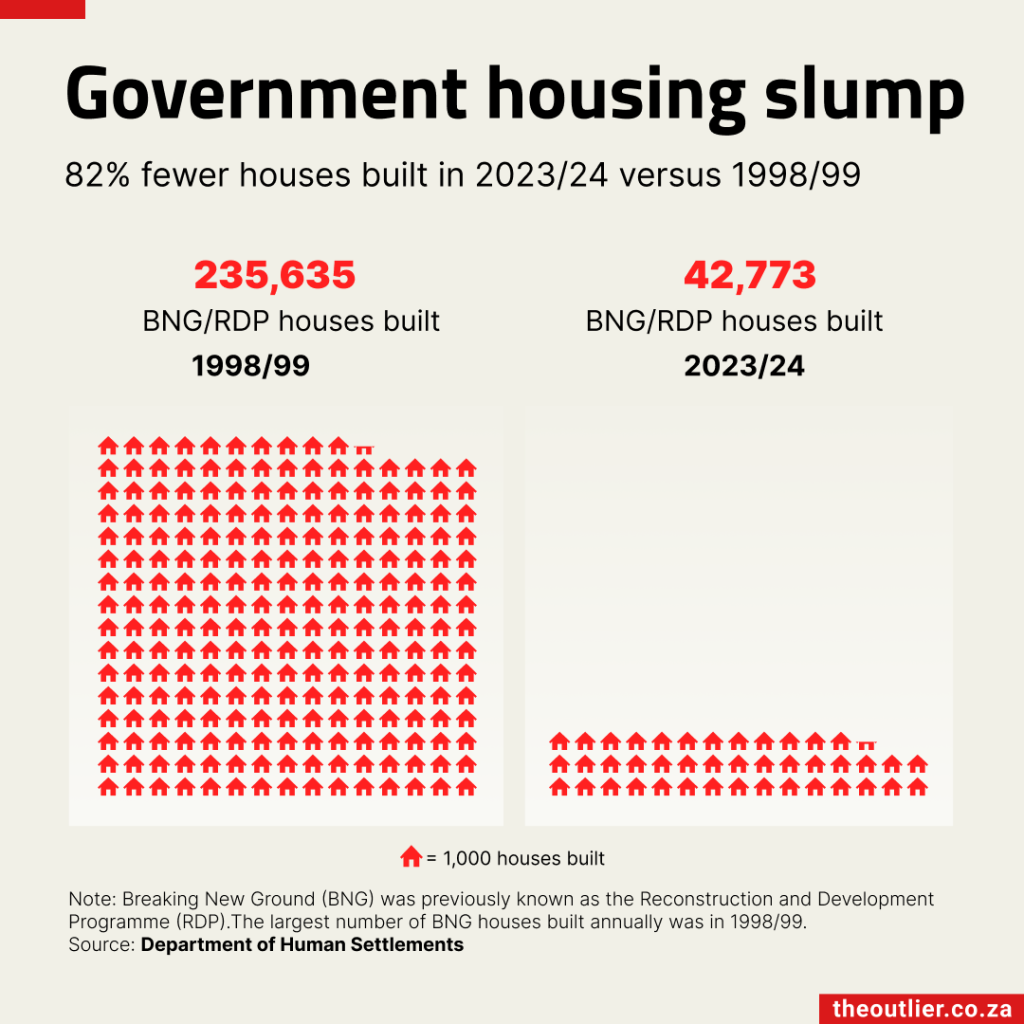
The Reconstruction and Development Programme (RDP), now known as Breaking New Ground (BNG), was introduced in 1994 by Nelson Mandela. Since then, more than 3.5-million BNG houses have been built for recipients who met certain criteria.
The government had aimed to upgrade all informal settlements by 2014 but a decade later, almost 3-million people are still on the National Housing Needs Register. The Department of Human Settlements says not all the people on the register actually qualify for a BNG house.
The department blamed their slow progress on Covid-19 and budget cuts in an email conversation with The Outlier. But numbers were on the decline long before the pandemic and, two years later, there is no significant sign of recovery.
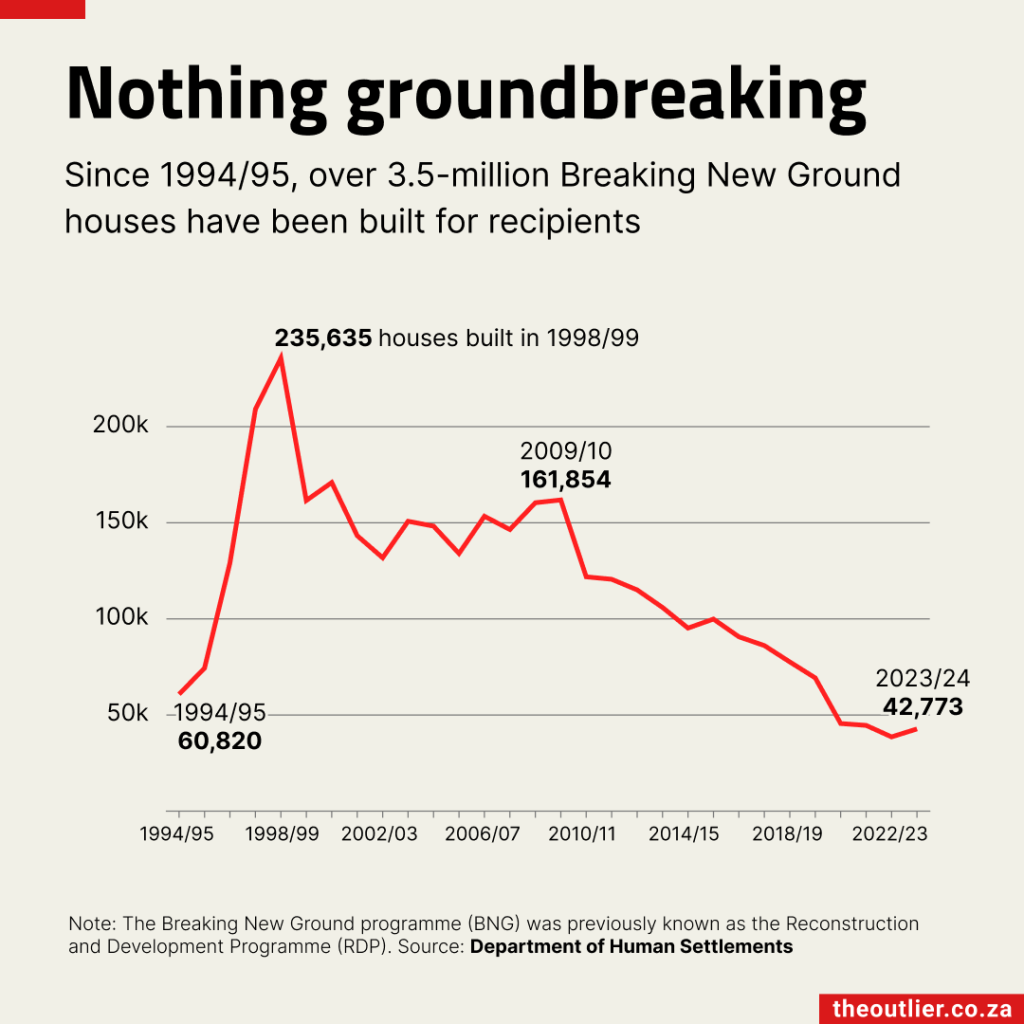
Keys to BNGs
To qualify for such a house, applicants must be South African citizens, first-time government-subsidy recipients, first-time homeowners and they must earn less than R3,500 per month per household, among other things.
Normal BNG houses are 40m2, 45m2 for people with disabilities and 50m2 for military veterans. The houses include 2-bedrooms, a bathroom with a toilet, shower and hand basin, an open-plan kitchen and living area.
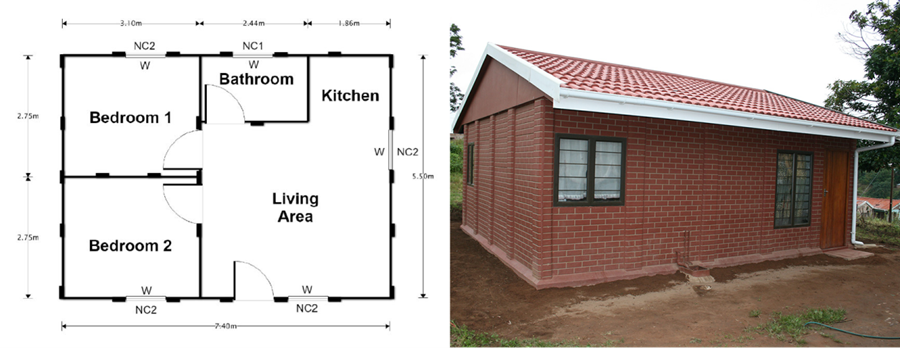
The amount of money spent on BNG houses increased by 29.7% in April last year. With the price adjustment, normal BNG houses cost roughly R255,000 each and houses for people with disabilities and military veterans cost about R271,000 and R312,000 respectively.
Houses built from 1 April 2023 were supposed to be fitted with solar panels and burglar proofing, according to the department. When asked whether these plans had in fact been implemented, they pointed us to provincial government departments.
Dis(re)pair
After 8 years of living in a BNG house, owners are allowed to sell it. Johanna Msiza, a domestic worker from Pretoria, bought a 17-year-old BNG house that she has been living in for 4 years. She says it has various construction issues.
‘[The house] does leak a little bit and it’s built on a wet place where the water table is high. I don’t think they check the areas before they build the houses there,’ Msiza says.
About 10% of government-subsidised houses were recorded as having weak walls and roofs, according to Statistics SA’s 2023 General Household Survey. Mpumalanga and the Western Cape had the highest number of problematic houses.
